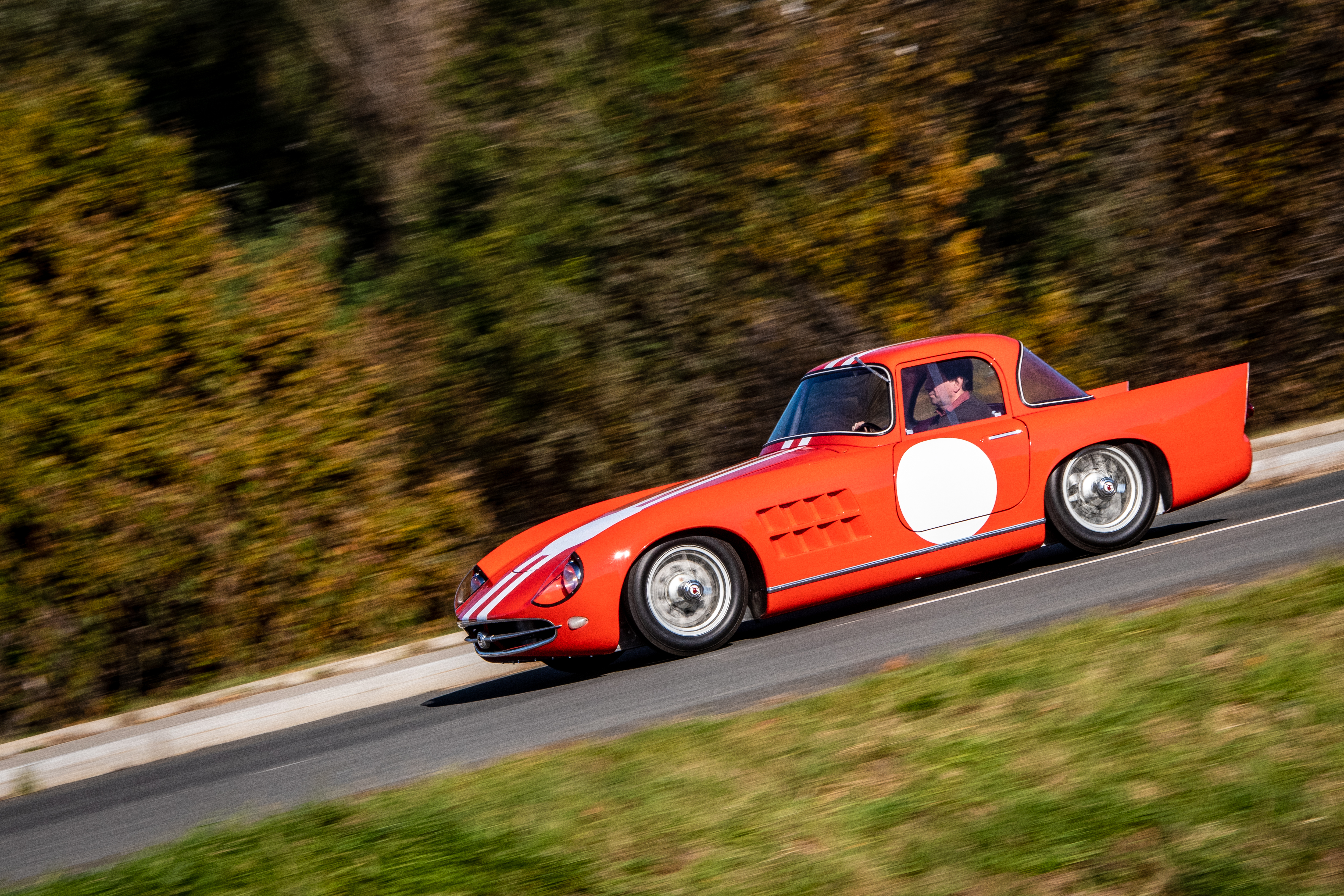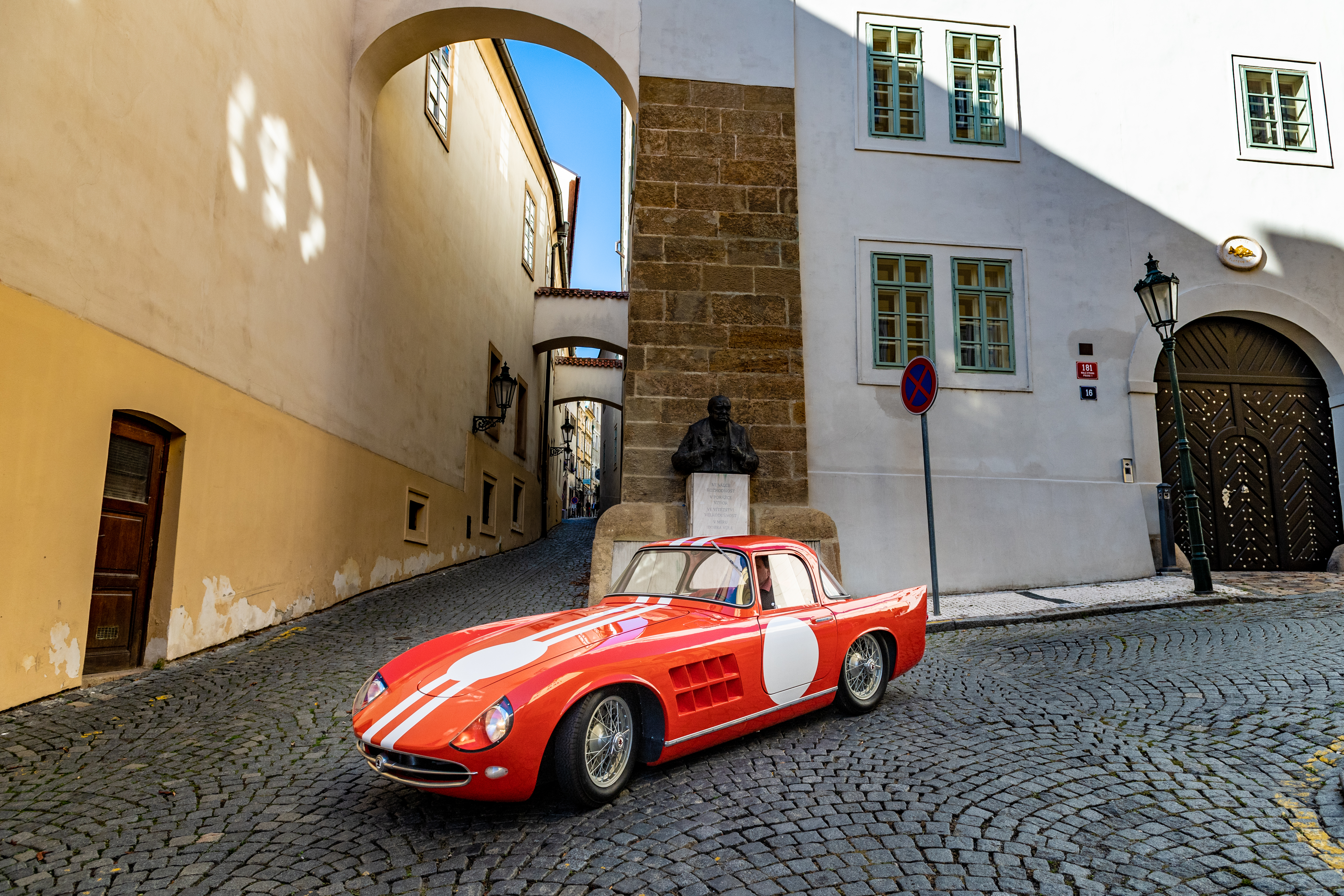ŠKODA 1100 OHC Coupé (1959) - technical specifications
Unlike the earlier ŠKODA SPORT and SUPERSPORT types, the 110 OHC Coupé is not built on a backbone chassis frame adopted - albeit with modifications - from mass production. The car is based on a lightweight yet rigid frame of super-strength thin-walled tubes. The front wheels are connected to a trapezoid made of pairs of superimposed triangular arms, with an effective trailer-arm wishbone axle system at the rear. Instead of the leaf spring bundles used on production ŠKODAs at the time, the designers opted for space-saving and lighter torsion bars.
 The stripped-down original ŠKODA 1100 OHC Coupé
The stripped-down original ŠKODA 1100 OHC Coupé
By placing the engine behind the front axle and the five-speed gearbox behind the rear “axle”, a favourable weight distribution was achieved, with 48 per cent of the weight on the driving wheels when the car was empty and an almost ideal 50.3 per cent balance with a 75kg racer at the wheel.
The technically advanced and also visually appealing power unit – a naturally aerated an 1100 CC engine under the low front bonnet - is also worthy of note. It shares its aluminium block and crankcase with the classic 40-horsepower Š 440 “Spartak”, but the two camshafts in the head, driven by a reliable gear train with its own lubrication circuit, help to more than double the power output. Modified combustion chambers increase the compression ratio to 9.3:1, and some of the interesting features that improve both fuel mixture combustion and operational reliability include two mutually independent ignition systems - the German Bosch dynamo and Swiss Scintilla Vertex magnetos.
 ŠKODA 1100 OHC Coupé: engine diagram
ŠKODA 1100 OHC Coupé: engine diagram
Delivering a peak output of 92 hp (67.7 kW) at 7,700 rpm and able to sustain up to 8,500 rpm for short periods, the engine’s cooling system is sized for racing circuits. Based on the fixed gear ratio, which was modified to offer a range of 3.73-5.25:1 to suit the character of the racetracks of the day, the open-top car could reach speeds of up to 200 km/h.
 The naturally aspirated 1100 cc engine: technically advanced and visually attractive
The naturally aspirated 1100 cc engine: technically advanced and visually attractive































